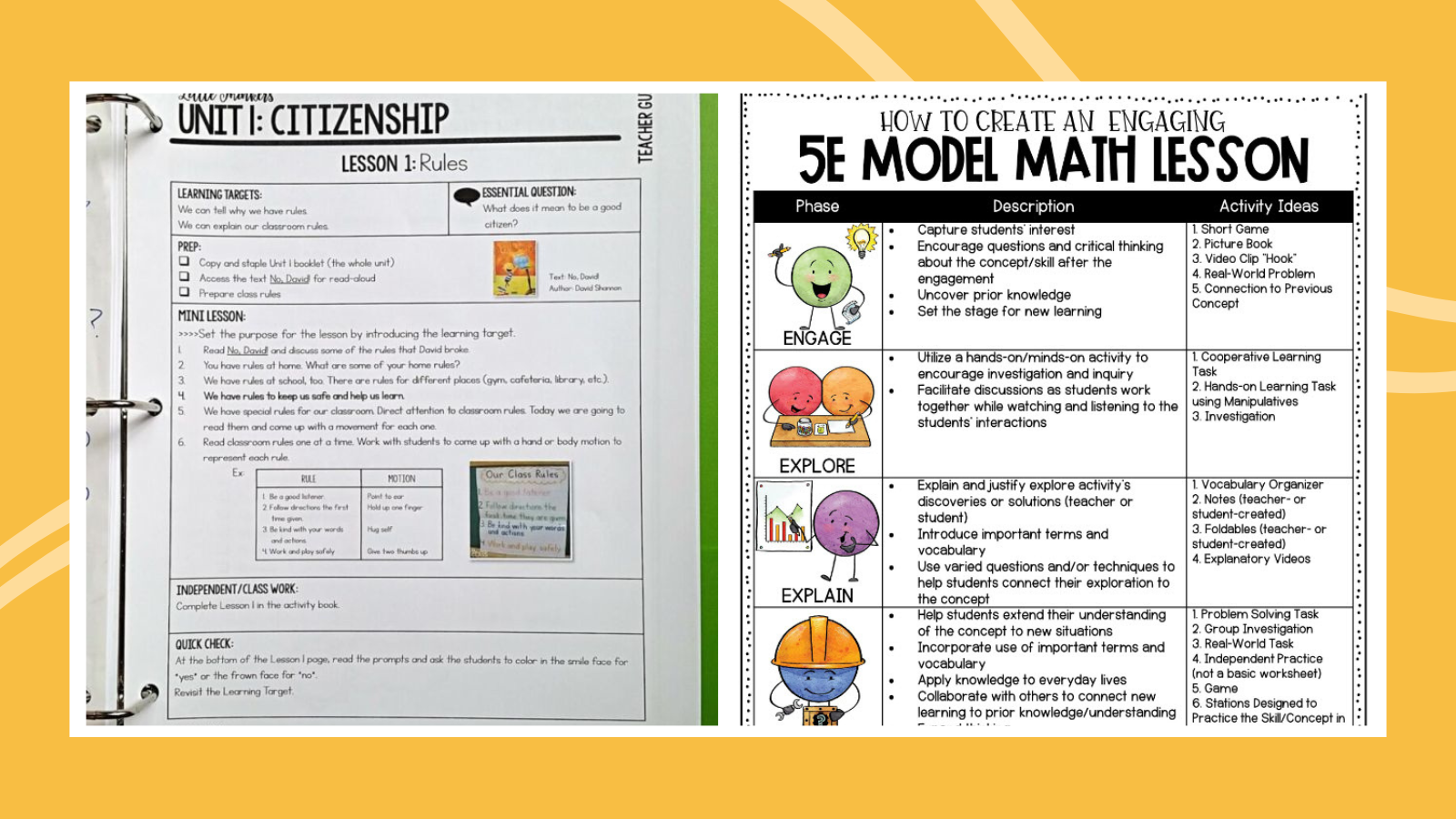

Lesson planning: Most teachers either love it or hate it. Either way, it’s something every teacher has to spend at least some time doing, so it’s worth learning to do well. Whether you’re a brand-new teacher or an experienced educator looking for some new ideas, these lesson plan examples offer inspiration for every subject and every grade level.
Many lesson plans include some or all of the following sections.
Some people think preschool is just playtime, but pre-K teachers know better! Here are some of the ways preschool teachers plan for their lessons.
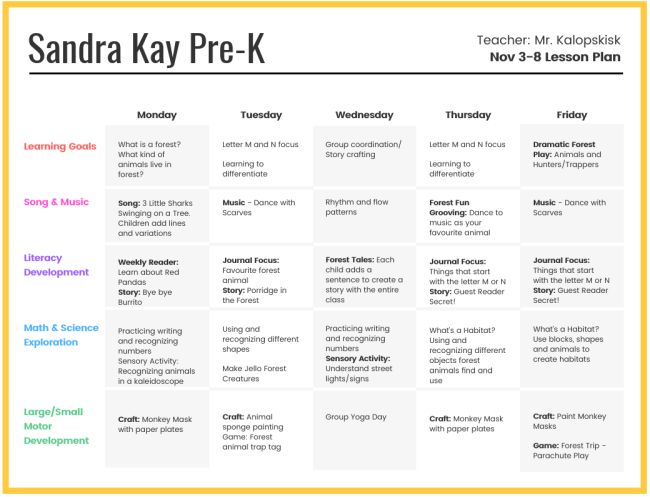
Weekly preschool lesson planning helps you plan each day and ensure you’re tackling all the most important skills.
 showing activities in various categories (Lesson Plan Examples)" width="650" height="502" />
showing activities in various categories (Lesson Plan Examples)" width="650" height="502" />
If you like to plan by theme, try a template like this. It includes space for a variety of activities that fit your topic.

If you’re focusing on a new letter of the alphabet each week, try lesson planning like this. You can see the week at a glance, including all the materials and books you’ll need.
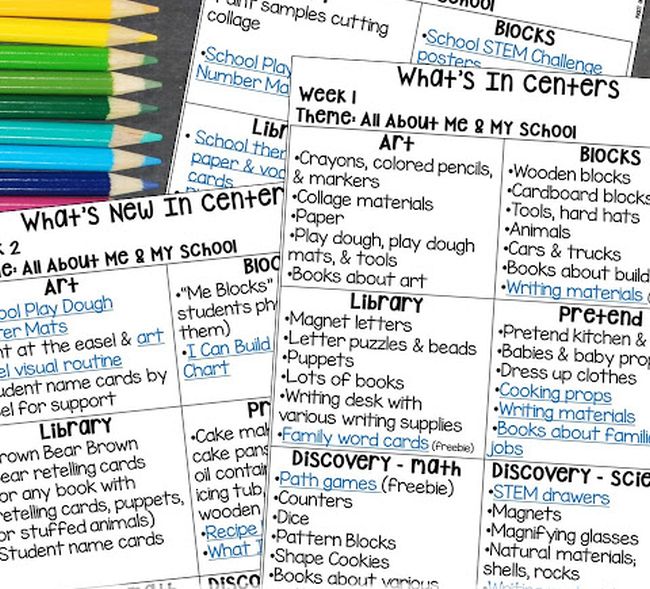
Your centers need some planning too! Whether you change them out weekly, monthly, or as needed, use plans like these to stay prepared.
ADVERTISEMENT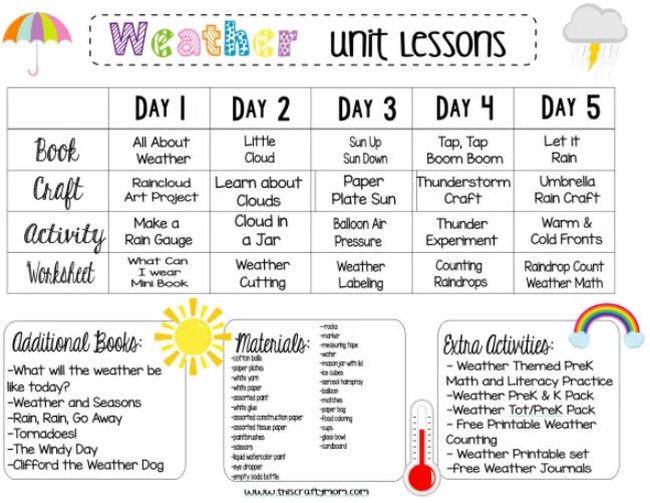
Adding pops of color and a few images can make it easier to locate the lesson plan you’re looking for in a snap.
Since elementary teachers tackle multiple subjects every day, their lesson plans might look like a general overview. Or they may prepare more detailed lesson plans for each topic to help them stay on track. The choice is up to you.
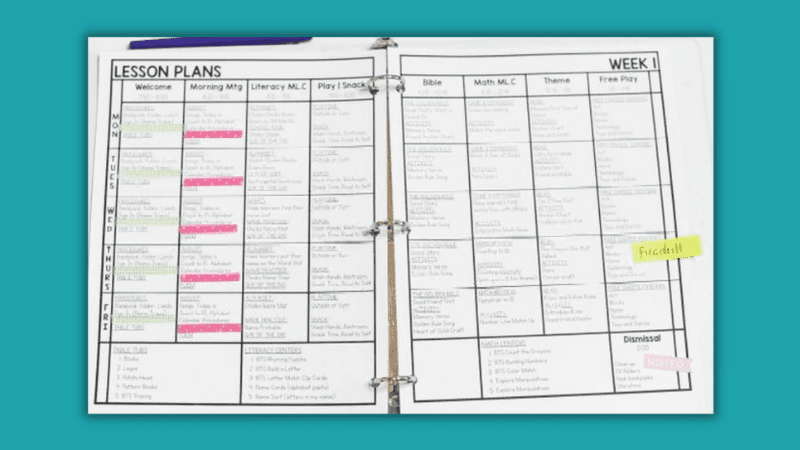
Don’t be afraid to write out your lesson plans by hand! A side-by-side setup like this lets you see a whole week at once. We love the use of color to highlight special things like fire drills.

Planning out a unit helps ensure you cover all the important topics and meet your learning objectives.

This example on adding three numbers together can be altered to fit any math lesson plan.

While these are elementary art lesson plan examples, you can easily use this style for teaching art at upper levels too.
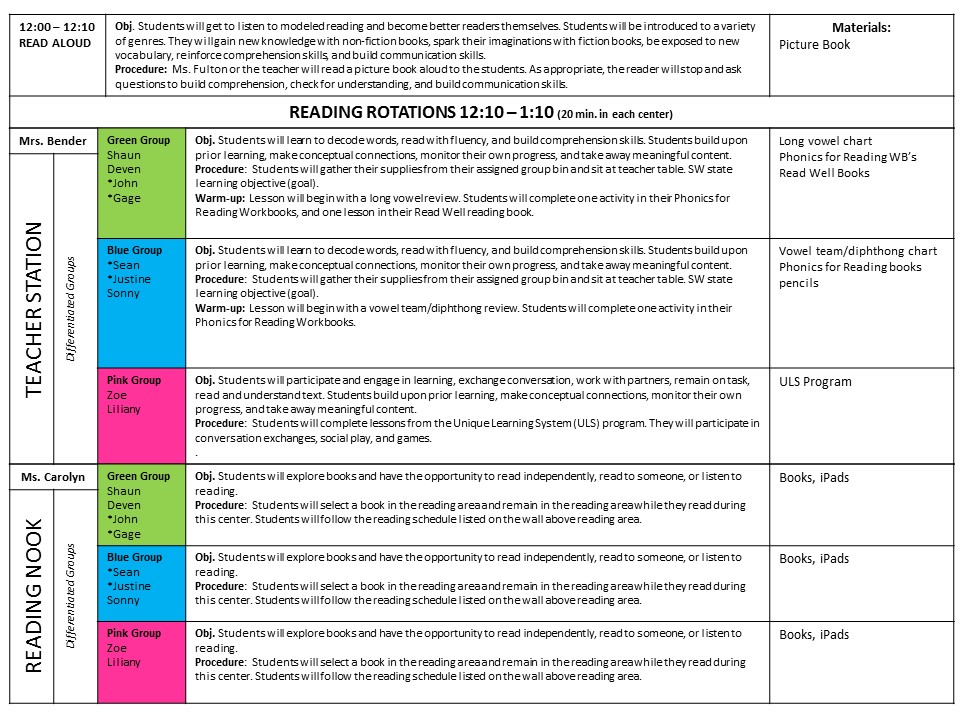
Lesson planning for special education looks different than general classroom lessons in that the lessons have to cover specific IEP goals and include lots and lots of progress monitoring. The Bender Bunch starts each lesson with independent work (read: IEP practice) and then heads into mini-lessons and group work.

Including images of your anchor charts is a great idea! That way, you can pull one out and have it ready to go in advance.
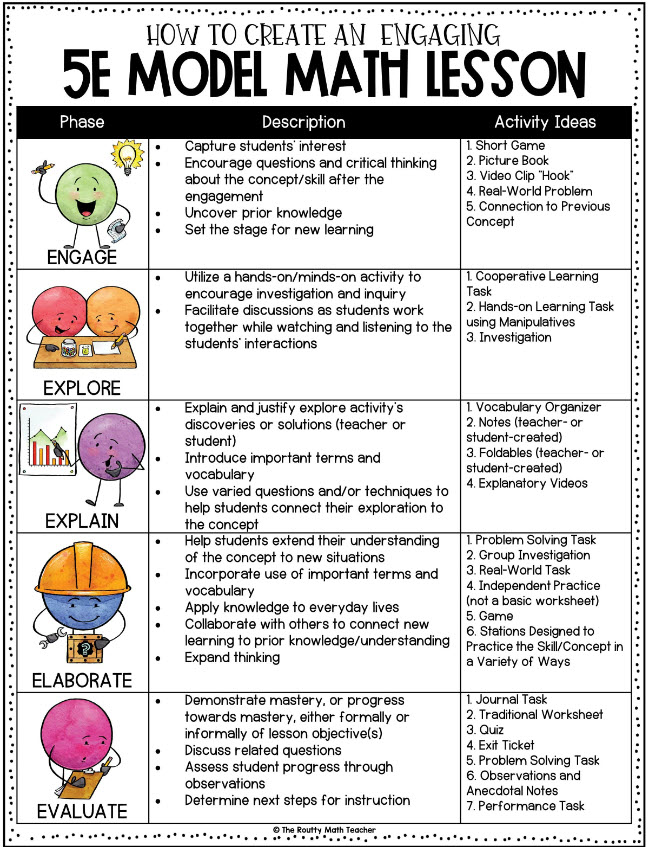
The 5Es stand for Engagement, Exploration, Explanation, Elaborate, and Evaluate. This type of lesson planning can be helpful for students as they work through each of the 5Es related to the topic you’re studying.
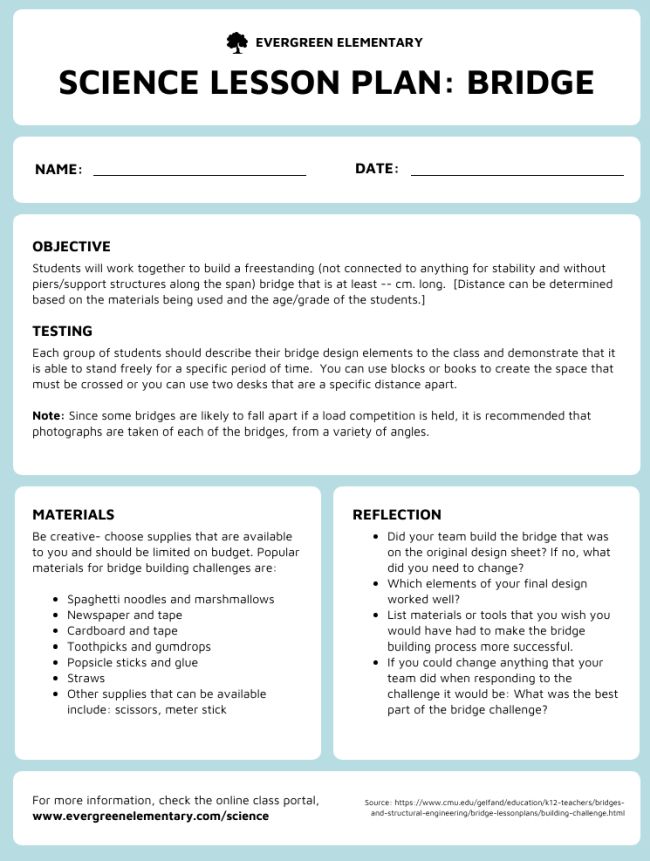
If you like to plan your lessons in more detail, take a look at this elementary science lesson plan example.

Gym teachers will love this lesson plan idea, which includes directions for playing the games.
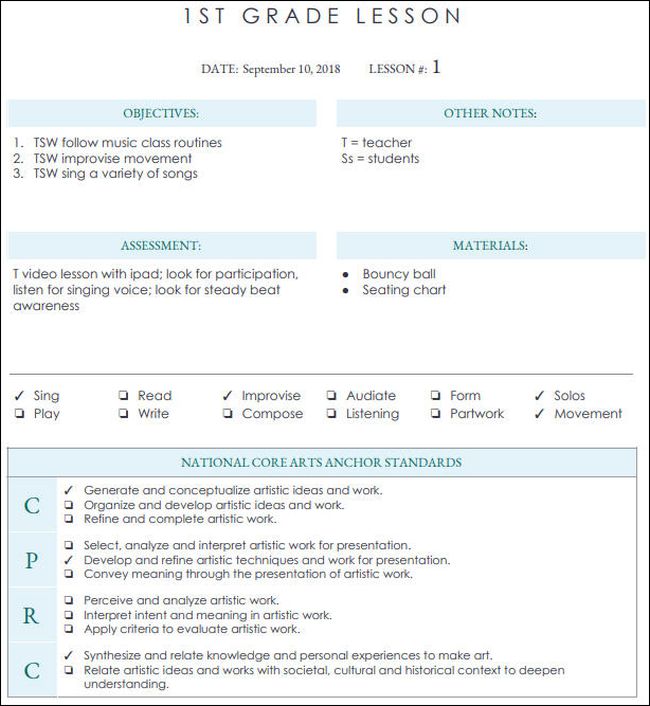
Plan out the skills and songs you’ll need for a meaningful music class with a lesson plan like this one.
At the middle and high school levels, teachers often need more detailed plans for each class, which they may teach multiple times a day. Here are some examples to try.
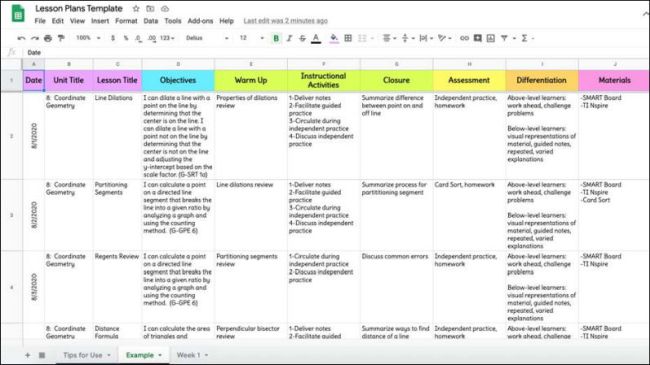
Google Sheets (or Excel) is terrific for lesson planning! Create a new tab for each week, unit, or class.

Some people really prefer to write things out by hand, highlighting important parts and making notes as they go. You can always convert this kind of plan to a digital format later if you need to.
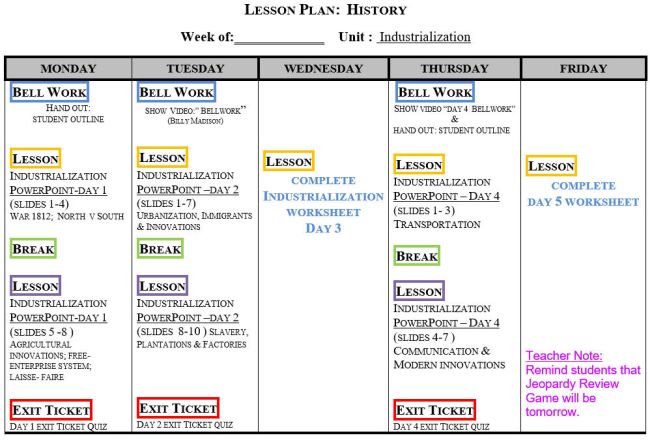
This example shows how you can plan out a week’s worth of lessons at once, and see the entire week all in one spot. This example is for history, but you could use this for math, ELA, or social studies too.

A pacing guide or outline works for both you and your students. Share it at the beginning of a unit to let them know what’s ahead.

5E lesson plans (Engagement, Exploration, Explanation, Elaborate, Evaluate) are great for middle and high school as well. This example is for science, but you can use the 5E structure across all lessons.
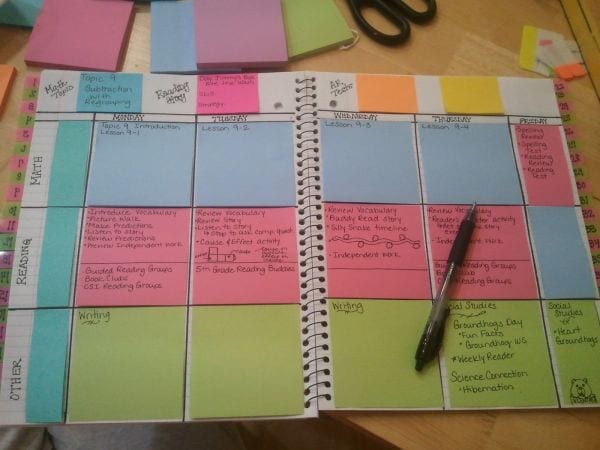
At some point, you’ll know what students are doing each day, you’ll just need some reminders for questions to ask and key points to cover. The nice thing about using sticky notes for lesson planning is if you get ahead or behind schedule, you can move the entire sticky-note lesson to another day. (Find more ways to use sticky notes in the classroom here.)

If your school uses backwards planning, you’ll be thinking about the outcome first and working back from there (rather than forward from an activity or task). Backwards planning lesson plans are intensive, but they’re also something you can use over and over, modifying them slightly for each group of students you have.

Detailed lesson plans take longer to prepare, but they make it easier on the day (especially if you wind up needing a sub).
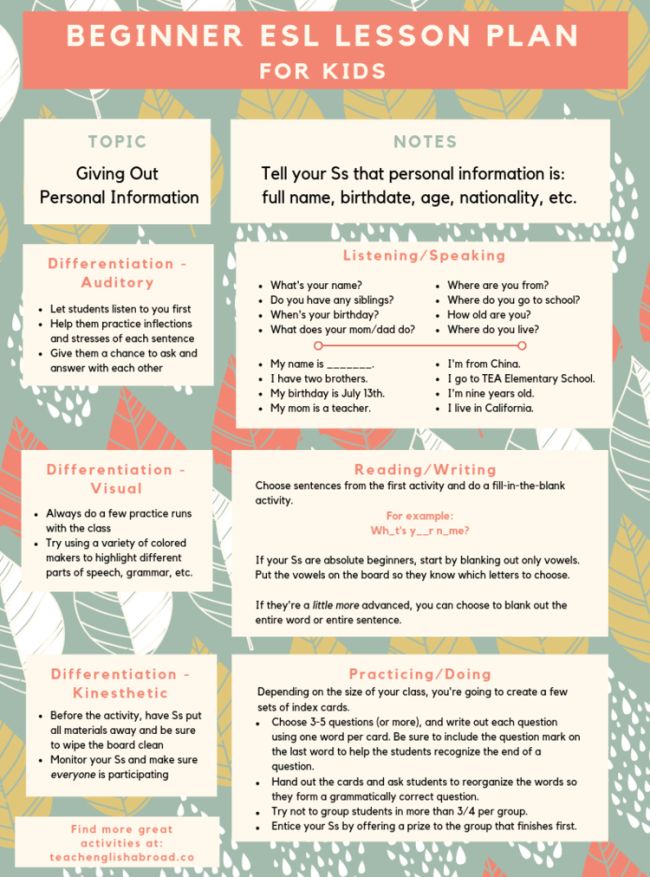
Whether you’re teaching English-language learners (ELL) or a world language to English speakers, this lesson plan style is perfect.

Use a lesson plan like this for choir, orchestra, band, or individual music lessons.

If your instruction includes both computer-based and in-person elements, this lesson plan idea might be just what you need.

This kind of lesson planning isn’t for everyone, but the extreme simplicity works well for some. Describe what students will learn, how they will learn it, and how they’ll demonstrate their knowledge.

Share this article
Show them what you've got.
Plus a free printable list of questions.
Jill Staake is a Contributing Editor with We Are Teachers. She holds a B.S. degree in Secondary English Language Arts Education and has taught in both middle and high school classrooms. Her background also includes vocational training and performance support, curriculum design and development, and museum education. She’s written hundreds of articles across the web on a vast array of educational topics including her top passions: reading, writing, and science. You can reach her at jill.staake@gmail.com.